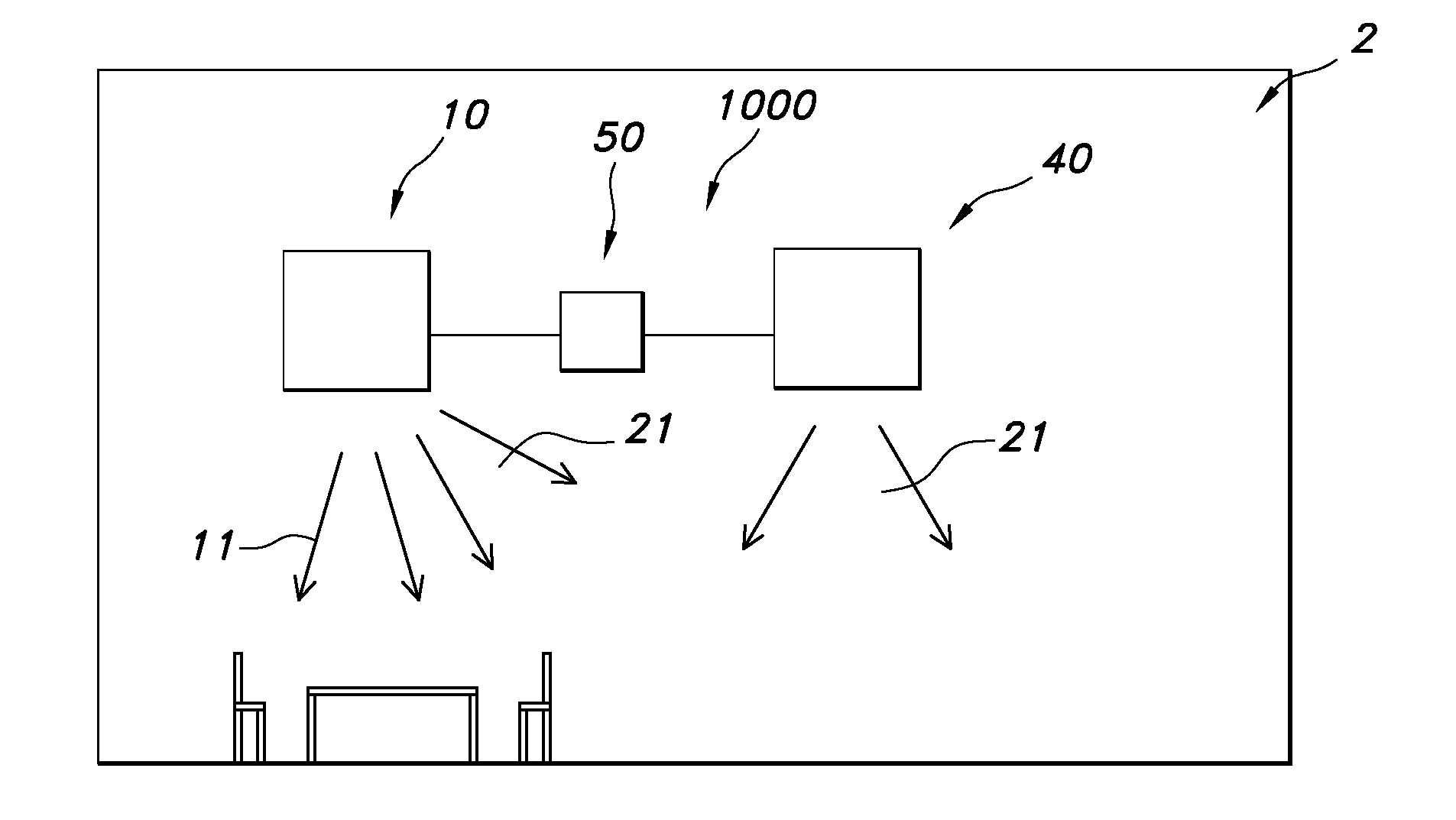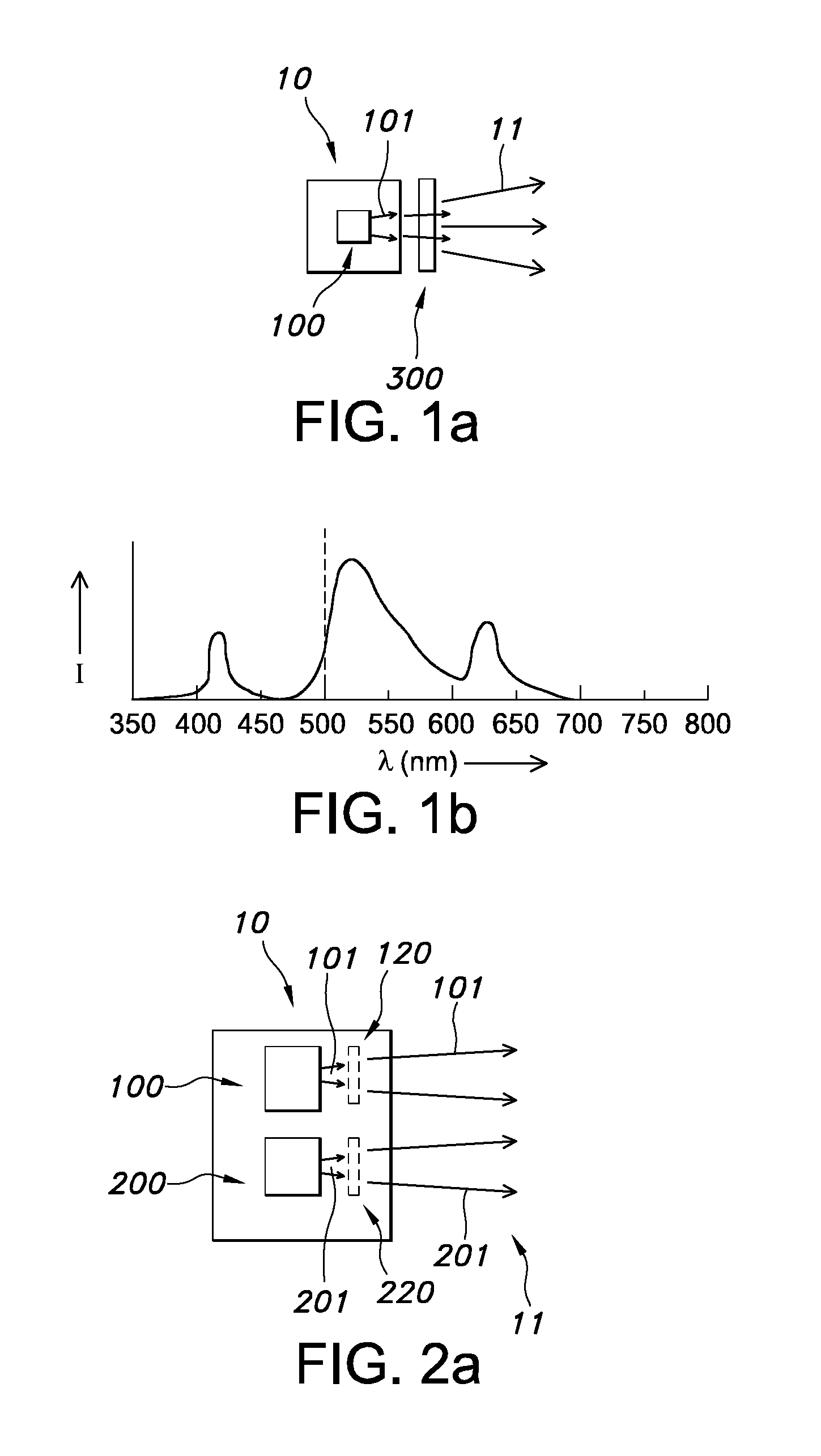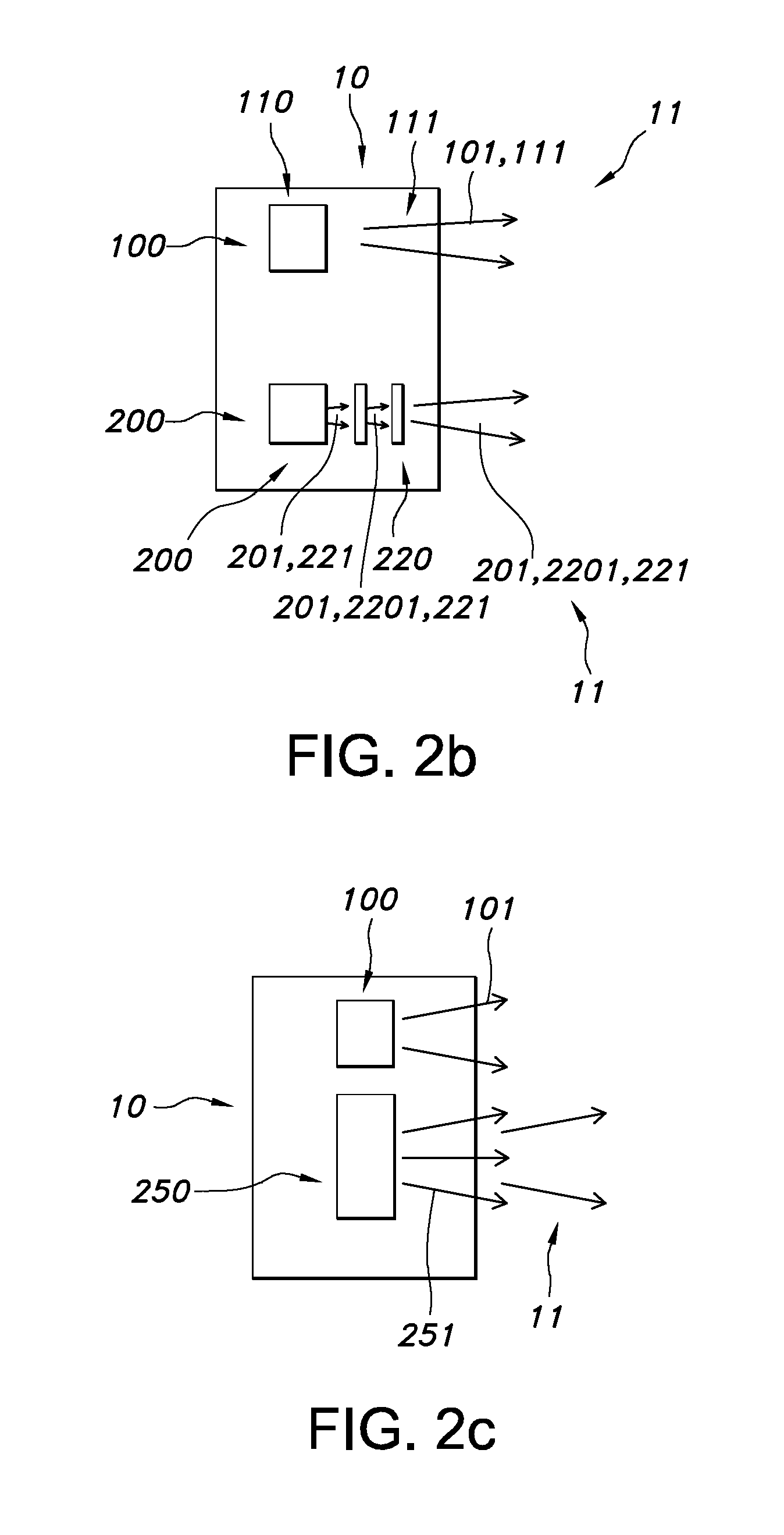Non-melatonin suppressing light source with a cri that approaches that of white light
a light source and non-melatonin suppressing technology, applied in the field of light source and lighting system, can solve the problems of enhancing non-visual responses that are not always desirable, affecting human health, and using goggles that are somehow intrusive, so as to prevent the disadvantageous melatonin suppressing effect of normal light, not or minimally suppressing melatonin production, and good color rendering
- Summary
- Abstract
- Description
- Claims
- Application Information
AI Technical Summary
Benefits of technology
Problems solved by technology
Method used
Image
Examples
Embodiment Construction
[0063]FIG. 1a schematically depicts a lighting unit 10 configured to generate light 11. The light 11 has a spectral intensity in the visible wherein at least 40% of all photons in the wavelength range of 400-500 nm are found in the wavelength range of 430-445 nm. As can be seen in FIG. 1b, there may be a spectral gap between about 500 nm and about 445 nm.
[0064]The lighting unit 10 may comprise a light source 100. The term “light source 100” may also refer to a plurality of identical or a plurality of different light sources. The light source 100 generates light 101. The light 101 may be substantially identical to the lighting unit light or light 11. In other words, the light 11 of the lighting unit is substantially based on the light source light 101. However, optionally an optical filter 300 may filter the light source light 101 to provide the desired light 11. For instance, the optical filter 300 may substantially reduce light having a wavelength in the wavelength range of 445-490...
PUM
 Login to View More
Login to View More Abstract
Description
Claims
Application Information
 Login to View More
Login to View More - R&D
- Intellectual Property
- Life Sciences
- Materials
- Tech Scout
- Unparalleled Data Quality
- Higher Quality Content
- 60% Fewer Hallucinations
Browse by: Latest US Patents, China's latest patents, Technical Efficacy Thesaurus, Application Domain, Technology Topic, Popular Technical Reports.
© 2025 PatSnap. All rights reserved.Legal|Privacy policy|Modern Slavery Act Transparency Statement|Sitemap|About US| Contact US: help@patsnap.com



